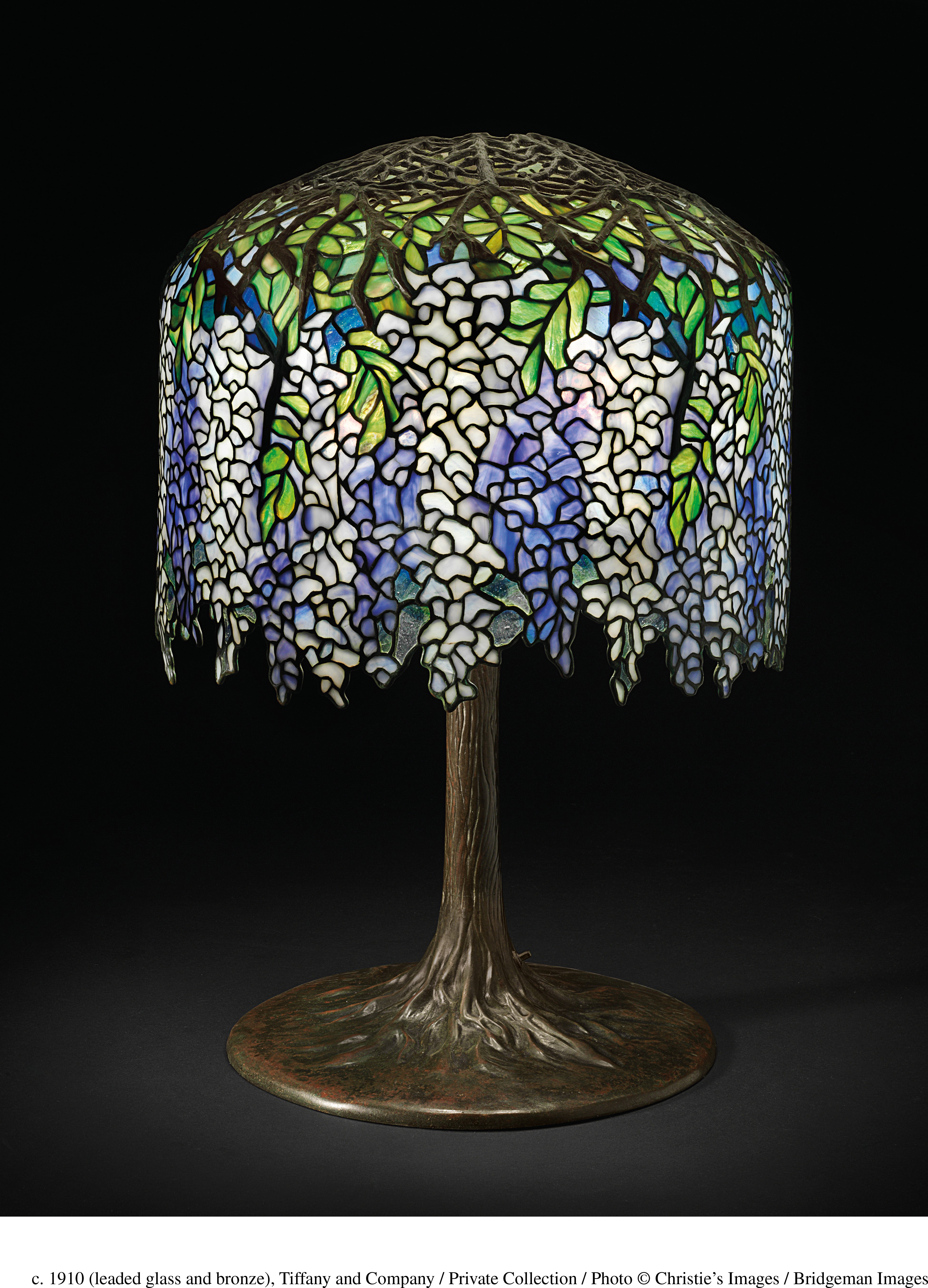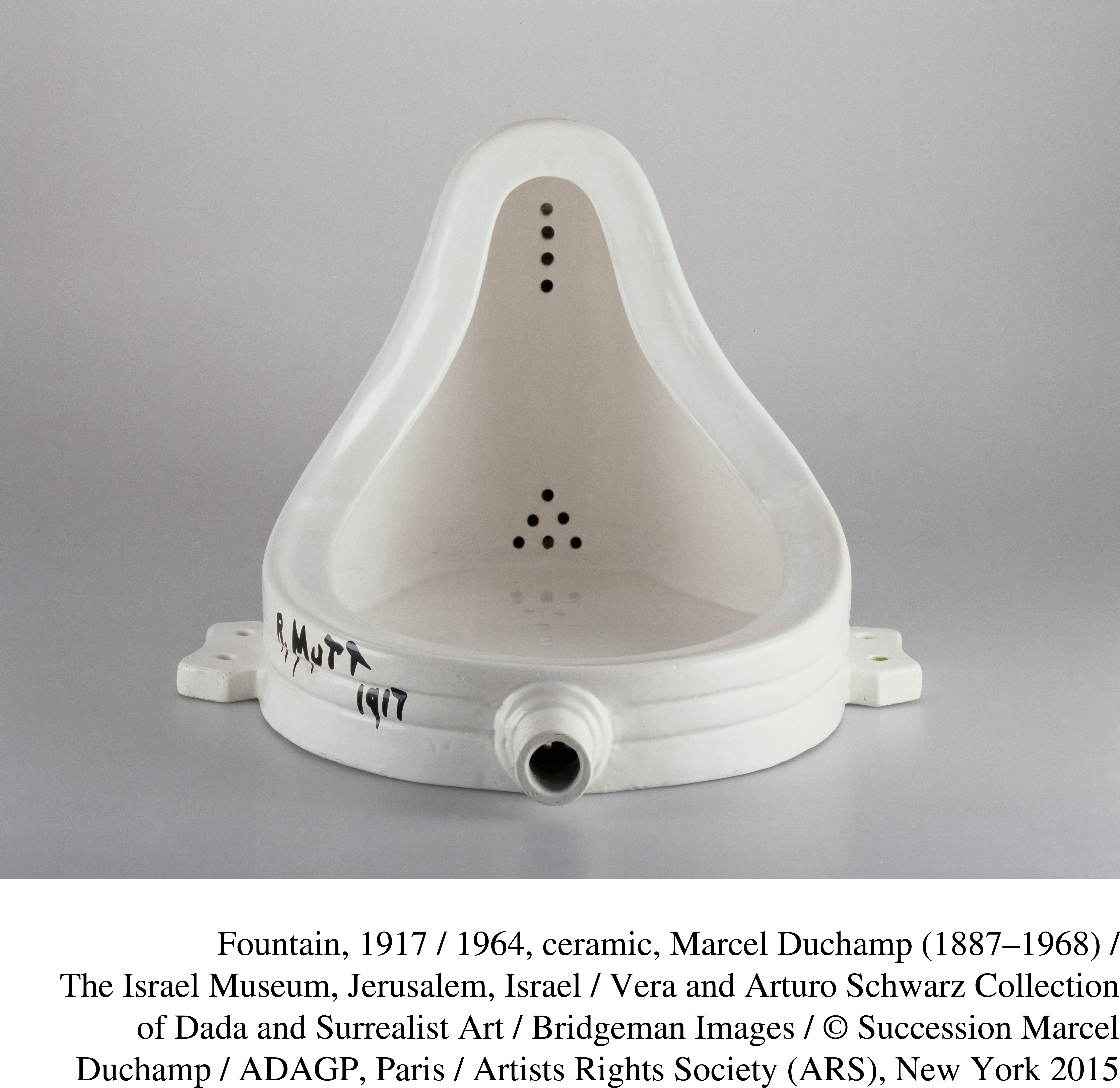Seeing History: Outrage and Consumption in Modern Art
Printed Page 819
Important Events

Louis Comfort Tiffany, from the Tiffany family of New York merchants, opened his own design and interior decorating studios in the last decades of the nineteenth century. Tiffany reveled in foreign designs, scooping up and having his artists copy objects from around the world. One of these, the famous “wisteria lamp,” was created by his top woman employee, Clara Driscoll, in imitation of the Japanese love of the wisteria. Such gorgeous objects as this lamp, associated with the branch of modern art called “art nouveau,” came to decorate the homes of prosperous people in the United States and Europe.
At the other extreme of modern art were the shocking works of accomplished French painter Marcel Duchamp, who outraged those attending artistic exhibitions with such works as “Nude Descending the Stairs” and “Fountain” (shown). Even his own associates in the art world sometimes refused to display his outrageous art. “Fountain” reflected Duchamp’s intention to display everyday objects such as the “fountain” or urinal. Earlier he had displayed a bicycle wheel and coffee grinder, also everyday objects. In fact, Duchamp was a believer in the Buddhist tenet that one should not have strong desires—thus, art should center on the “ready at hand”—any common object in the artist’s world. Moreover, the urinal was mentioned at the time as capturing the outline of Buddha. For all that, the shock remained among the public down to the present.
Question to Consider
In what ways do these objects fit into the political, social, and cultural history of the turn of the century?